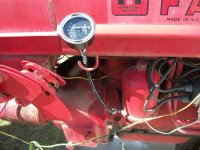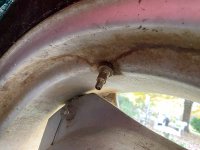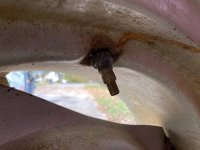Soundguy
Old Timer
- Joined
- Mar 11, 2002
- Messages
- 52,424
- Location
- Central florida
- Tractor
- RK 55HC,ym1700, NH7610S, Ford 8N, 2N, NAA, 660, 850 x2, 541, 950, 941D, 951, 2000, 3000, 4000, 4600, 5000, 740, IH 'C' 'H', CUB, John Deere 'B', allis 'G', case VAC
my rec, for a gauge on a liquid tire, is to use a grease gun hose coupled to a gauge, with a tire valve end on the hose.
the liquid will never hit the gauge.
I have oil pressure gauges with whips like this for checking tractors. many times i go look at tractors with no gauge, and it's easy to pull an old sendor or plug, thread int he gauge on a hose with an adapter if needed, then check pressure. here's the one i use, and this is an actual pic of me using it on a farmall C i bought at auction that had no gauge!

the liquid will never hit the gauge.
I have oil pressure gauges with whips like this for checking tractors. many times i go look at tractors with no gauge, and it's easy to pull an old sendor or plug, thread int he gauge on a hose with an adapter if needed, then check pressure. here's the one i use, and this is an actual pic of me using it on a farmall C i bought at auction that had no gauge!



